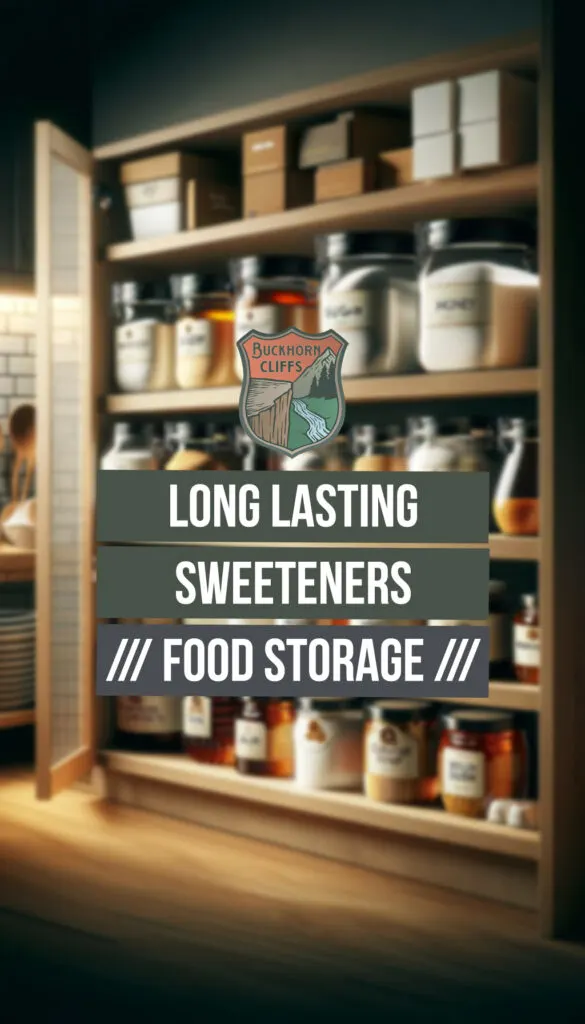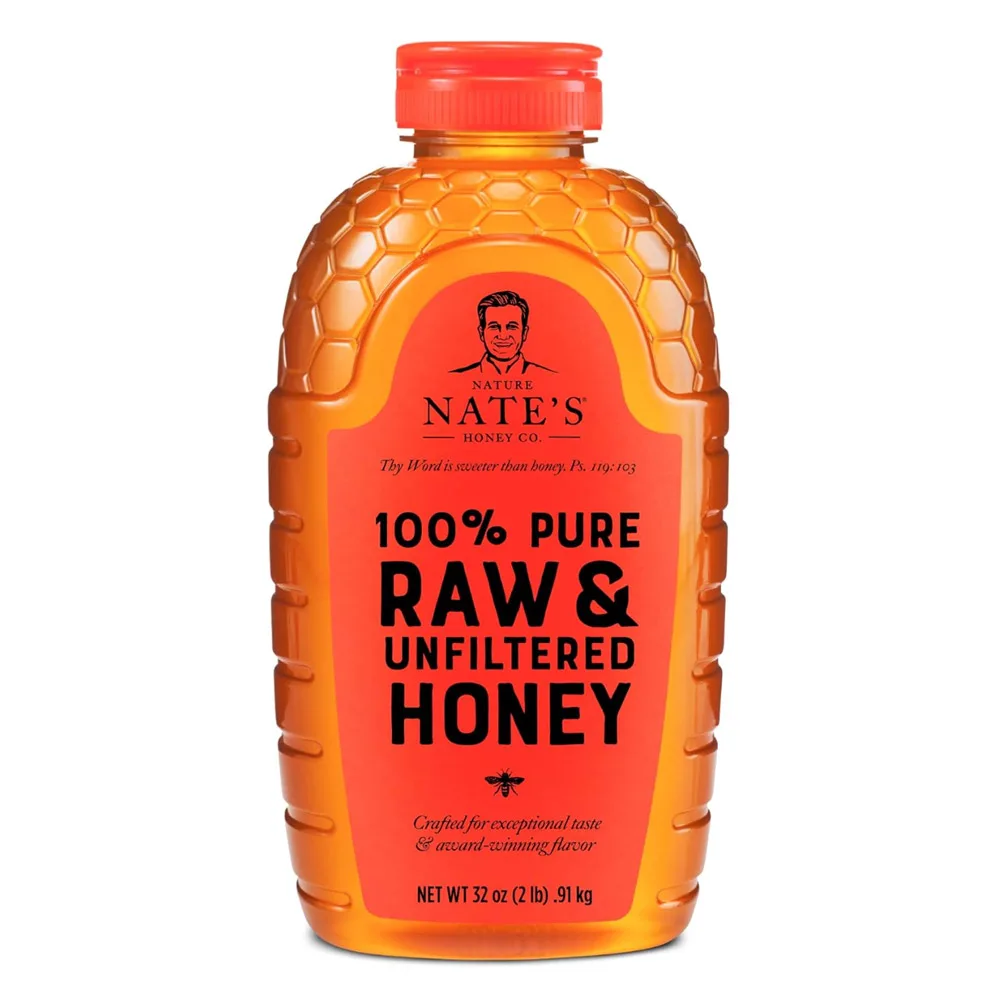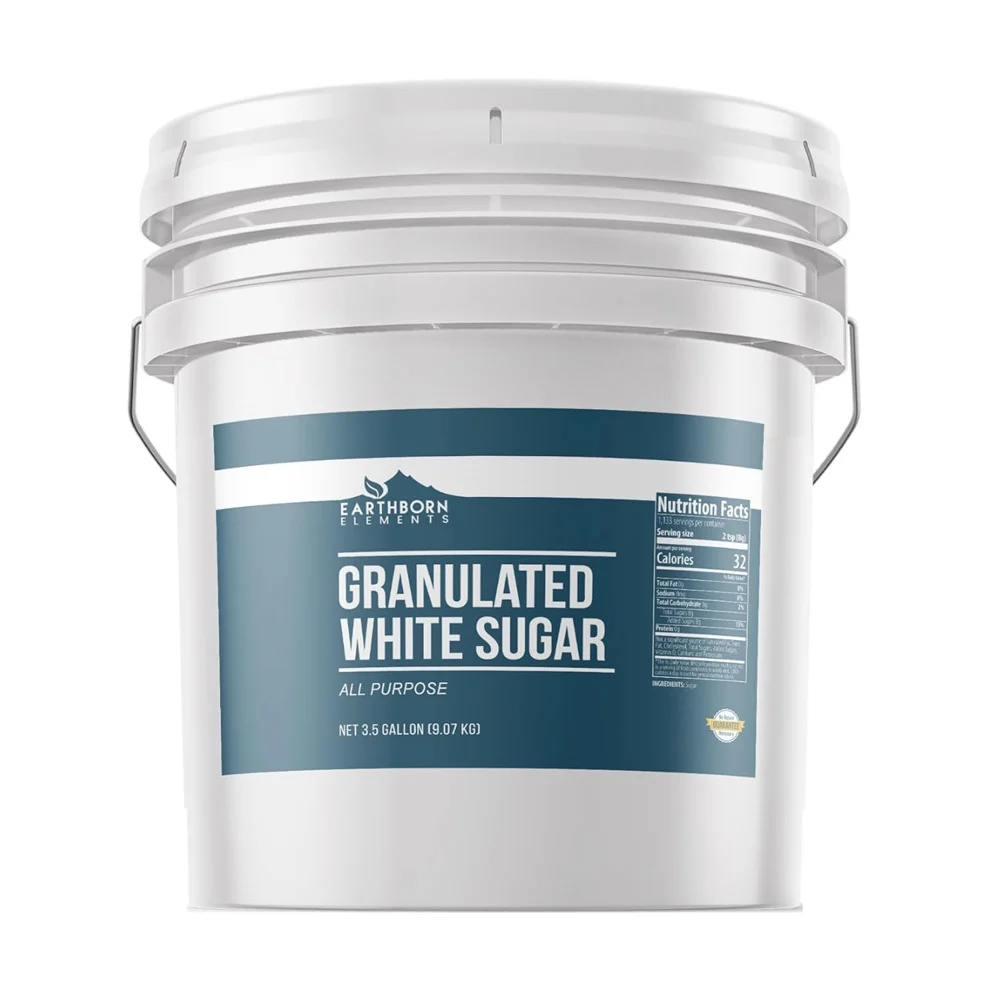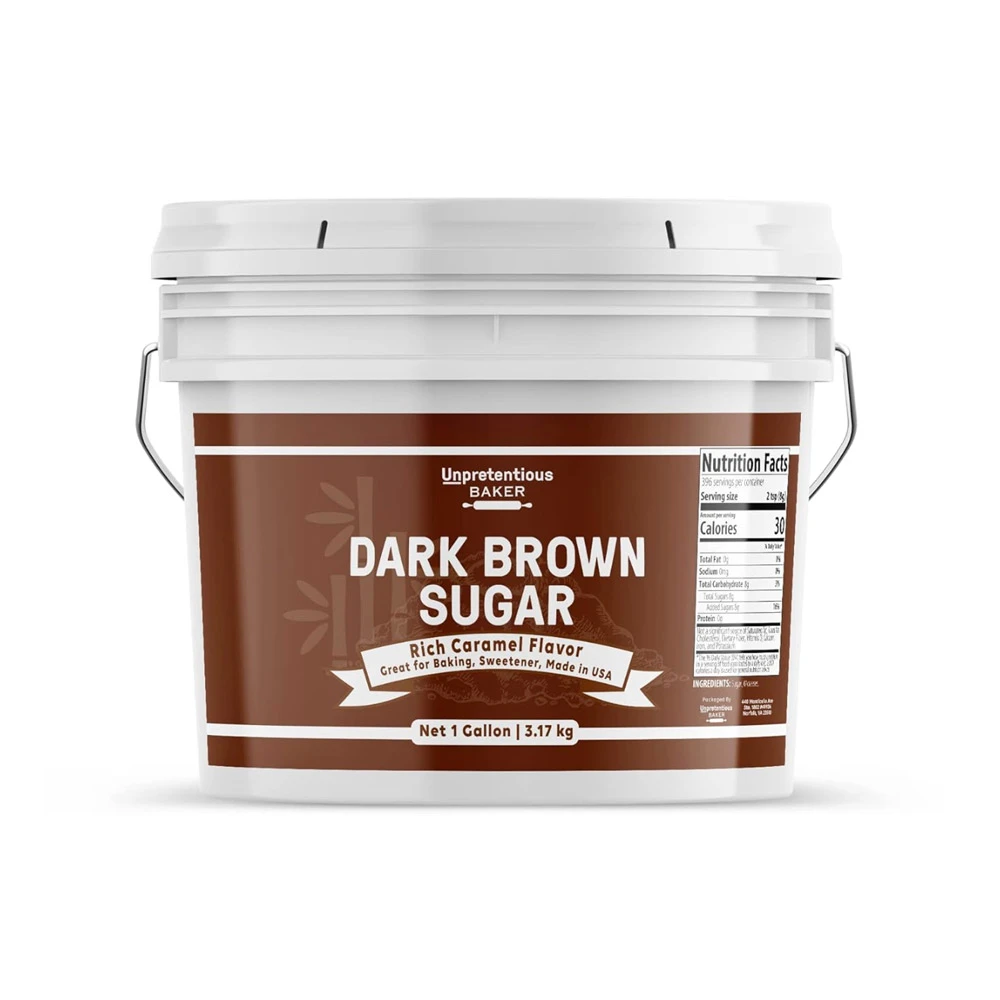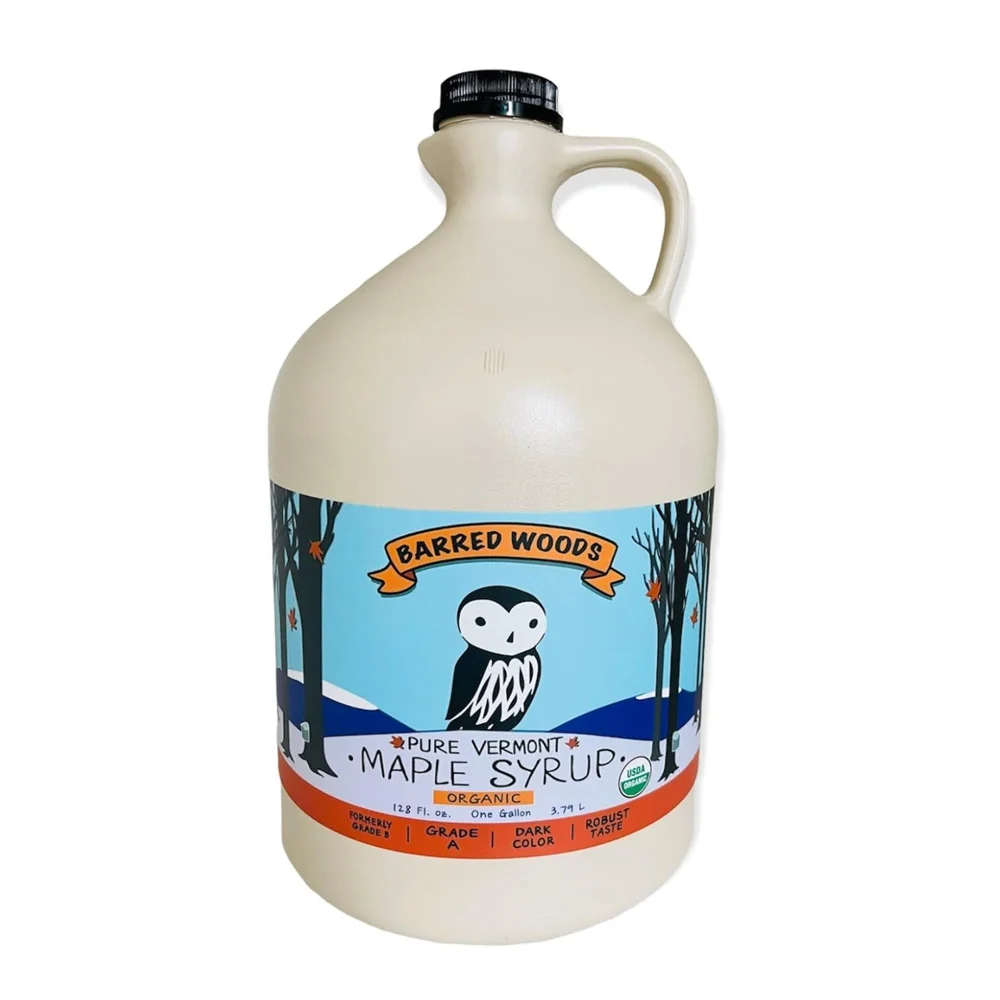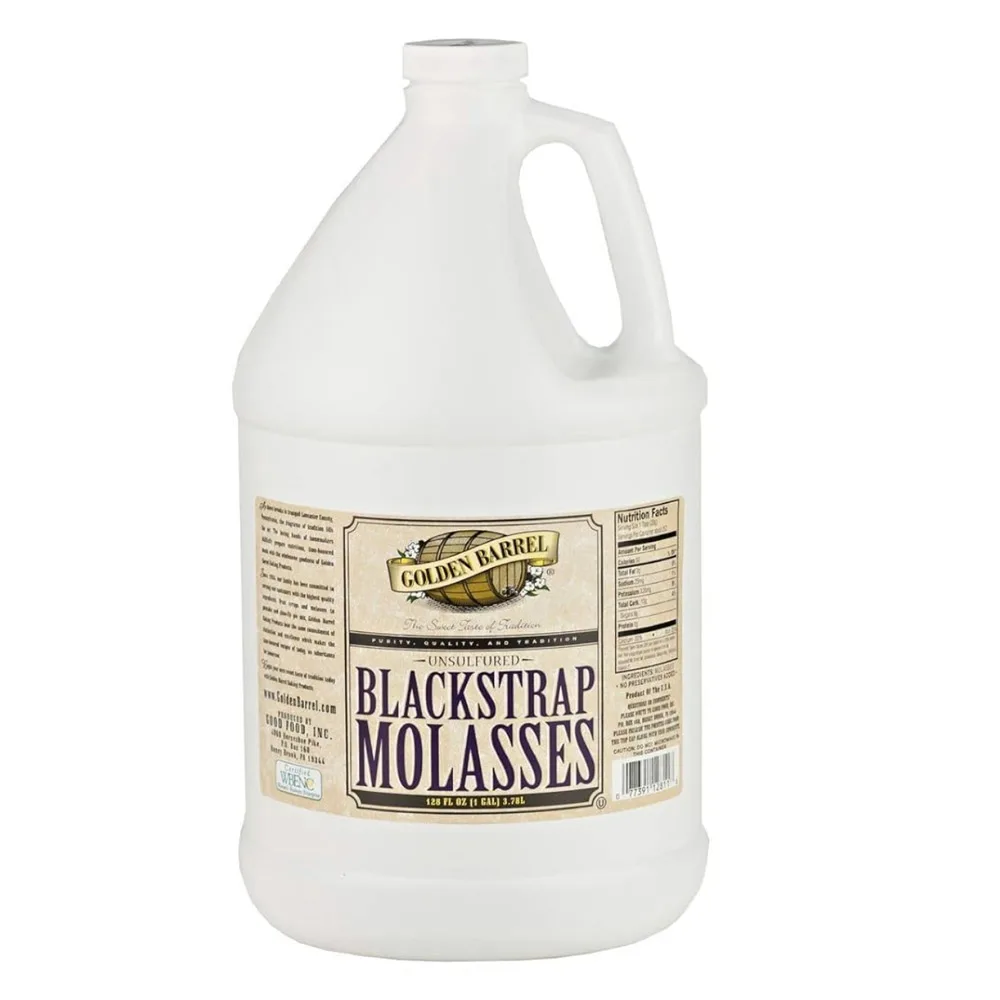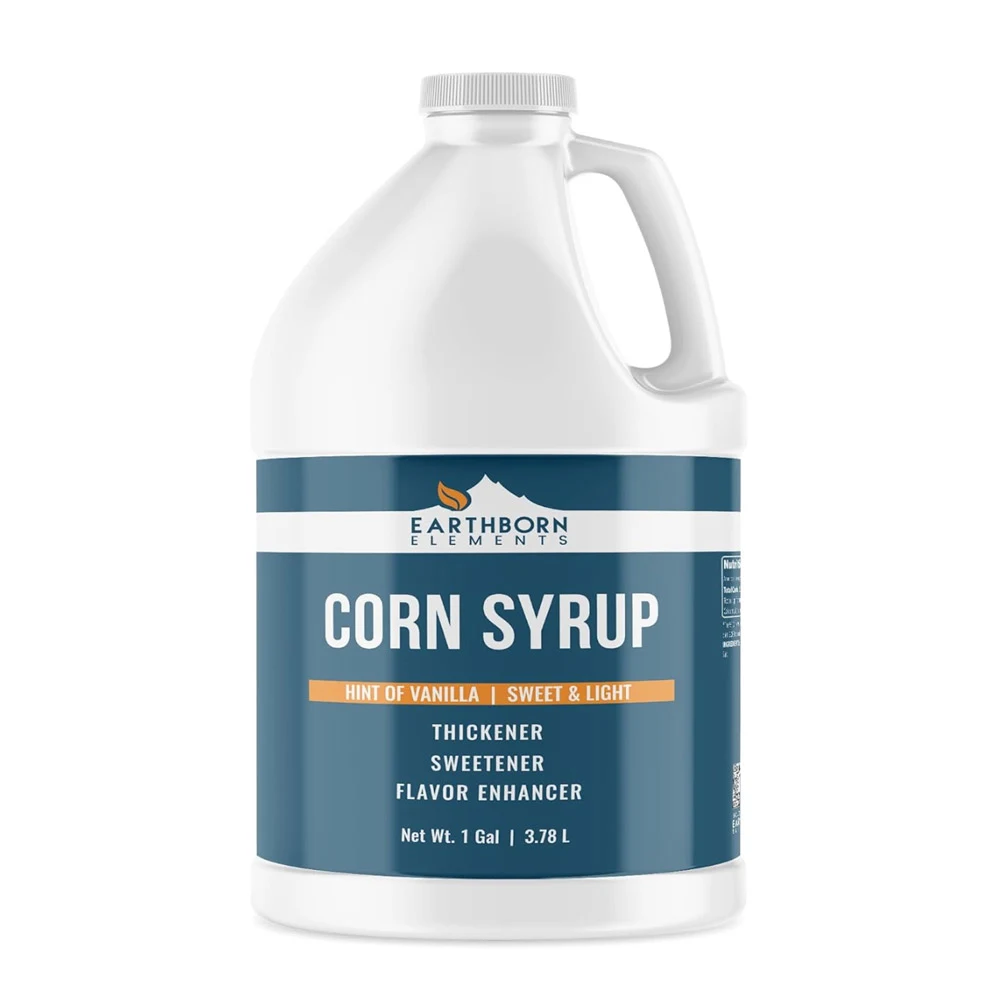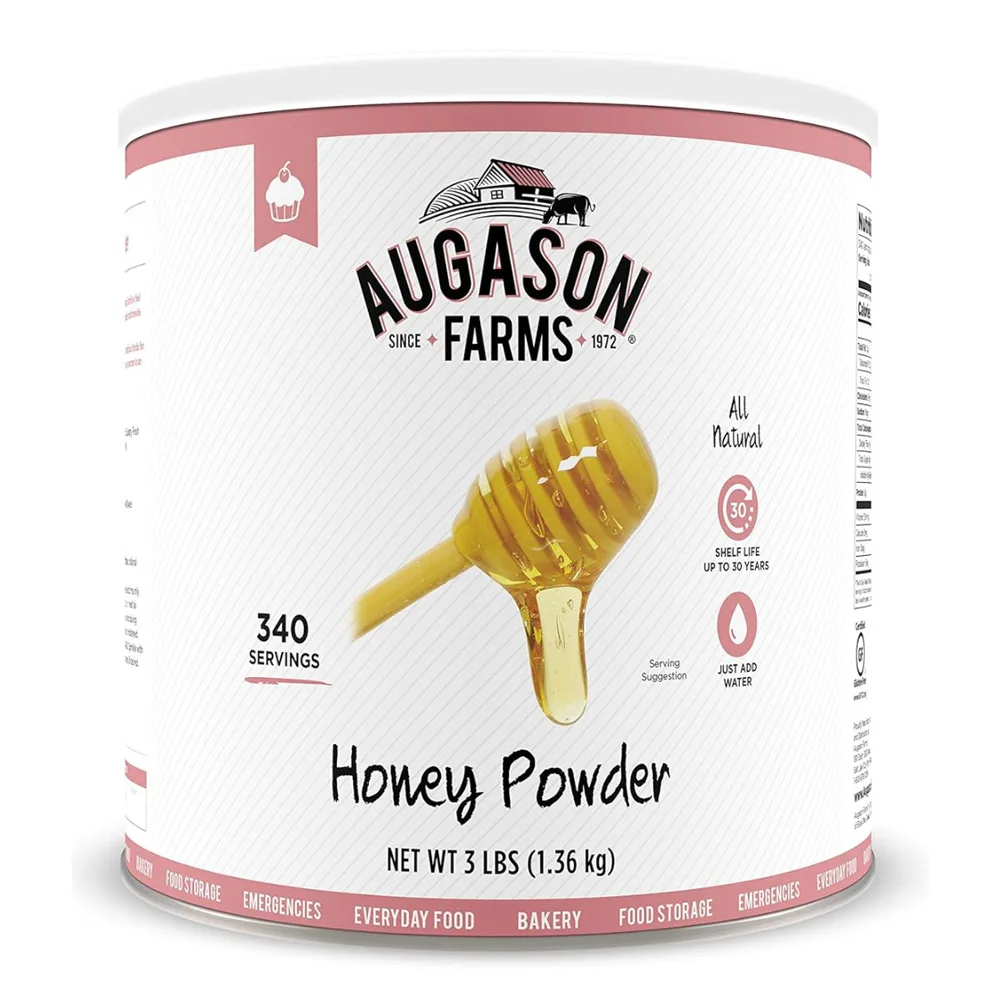In preparing for emergencies, job loss, or periods of social unrest, it’s essential to consider the longevity and utility of the food items in your storage. Sweeteners, often valued for their ability to enhance the flavor of foods, play an important role.
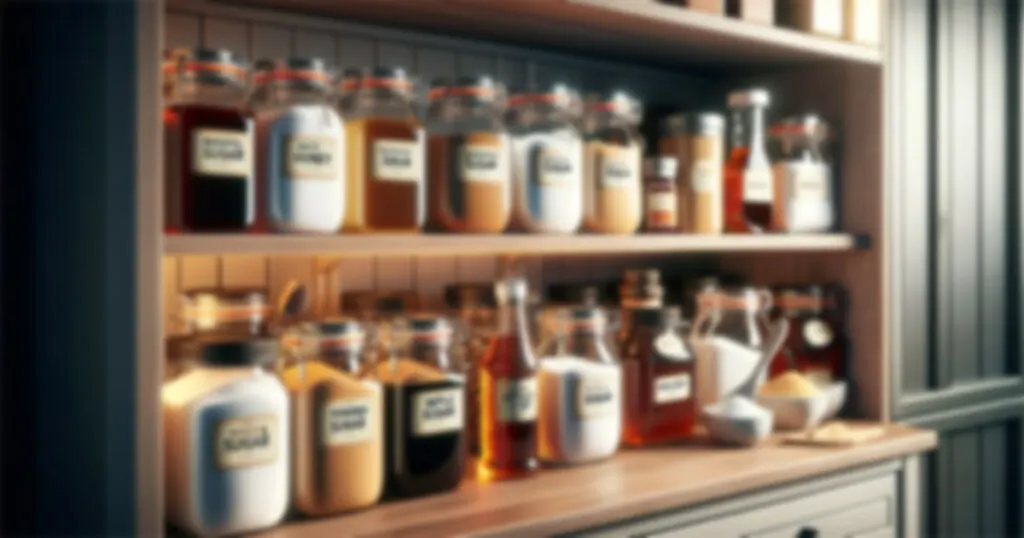
They’re not just for satisfying a sweet craving but are also a great option for adding energy and improving the palatability of various foods. Selecting sweeteners with a long shelf life is key to ensuring they remain safe and effective for consumption over extended periods.
In this post, we delve into some of the best sweeteners that are perfect for long-term food storage, catering to the needs of those preparing for any unforeseen events.
All of these selections are high glycemic sweeteners (quick, short energy).
- Honey: Honey has an indefinite shelf life due to its low moisture content and high acidity. It’s a natural preservative and can remain edible for years, even centuries.
- Sugar (White, Granulated): White sugar can last indefinitely if stored properly in an airtight container in a cool, dry place. It doesn’t support bacterial growth.
- Sugar (Brown and Powdered): While these can last indefinitely, they are best used within two years for optimal flavor. Store them in airtight containers to prevent them from hardening.
- Maple Syrup: Pure maple syrup can last indefinitely if unopened and stored in a cool, dark place. Once opened, it should be refrigerated and ideally used within a year, but it can remain safe to consume beyond that.
- Molasses: This sweetener can last for about ten years when stored in a cool, dry place. It’s a by-product of sugar production and is quite stable.
- Corn Syrup: Often used in baking, corn syrup can last indefinitely if stored properly in a cool, dry place. It’s a popular sweetener and preservative.
- Sugar & Honey Powder Blend: This blend is great for long-term storage, with a shelf life of up to 20 years unopened.
Honey
Honey is a unique sweetener with properties ideal for long-term storage. Its composition and natural preservatives allow it to remain stable and edible indefinitely, making it a strategic choice for emergency food supplies.
- Indefinite Shelf Life: Honey’s low moisture content and high acidity inhibit bacterial growth, enabling it to last for centuries. This has been evidenced by honey found in ancient tombs, still preserved after millennia.
- Antibacterial Properties: Honey’s natural antibacterial qualities make it an effective preservative, useful in extending the shelf life of various foods.
- Culinary Flexibility: Beyond sweetening, honey is used in baking, as a meat glaze, in dressings, and more. Its versatility is beneficial in limited-supply situations.
- Nutritional Value: Honey provides antioxidants, trace vitamins, and minerals. It’s also recognized for medicinal uses, such as soothing throats and contributing to allergy relief.
- Energy Source: As a carbohydrate, honey is a quick energy provider, essential in emergency scenarios where immediate energy may be needed.
- Storage Recommendations: Store honey in a cool, dry place. Crystallization is a natural process and reversible by gently warming the honey.
- Varietal Differences: Honey varies in flavor based on the nectar source. This variety can enhance the taste profile of stored food supplies.
Sugar (White, Granulated)
White granulated sugar is a fundamental sweetener with excellent storage capabilities, making it a reliable choice for long-term food reserves. Its simple composition and lack of moisture provide a stable shelf life when stored correctly.
- Indefinite Shelf Life: The absence of water and a high concentration of sucrose prevent microbial growth, allowing white sugar to last indefinitely under proper storage conditions.
- Non-Supportive of Bacterial Growth: Its inability to support bacterial growth makes it a safe and durable option for food storage.
- Versatility in Cooking: White sugar is essential in baking, preserving, and flavoring a wide range of dishes. Its neutral flavor and sweetening properties make it adaptable to various recipes.
- Energy Source: As a carbohydrate, it provides a quick source of energy, which can be crucial in emergency situations.
- Storage Tips: To maintain its quality, store white sugar in an airtight container in a cool, dry place. This prevents moisture absorption and clumping.
- Use in Food Preservation: Besides its use as a sweetener, sugar is a key ingredient in preserving fruits and making jams and jellies, extending the shelf life of these foods.
Sugar (Brown and Powdered)
Brown and powdered sugars are variants of regular sugar with specific uses and storage considerations, making them useful additions to long-term food storage plans. Their unique properties cater to different culinary needs in emergency food supplies.
- Long Shelf Life: Both brown and powdered sugars can last indefinitely. However, for best flavor and texture, they are ideally used within two years.
- Moisture Content and Clumping: Brown sugar contains more moisture than white sugar, which can lead to hardening. Powdered sugar can also clump over time. Proper storage in airtight containers is essential to maintain their quality.
- Culinary Uses: Brown sugar is known for its rich, molasses flavor, ideal for baking and creating depth in savory dishes. Powdered sugar is used for icings, confections, and as a dusting for desserts.
- Energy Source: Like white sugar, these sugars are carbohydrates and provide a quick energy boost.
- Storage Recommendations: Store in a cool, dry place in airtight containers to prevent hardening and clumping. Silica gel packets can be added to brown sugar containers to absorb excess moisture.
- Role in Food Preservation: While not as commonly used as white sugar for preservation, brown sugar can be used in meat curing and smoked foods, adding a unique flavor profile.
Maple Syrup
Maple syrup, a natural sweetener derived from the sap of maple trees, offers a distinct flavor and a range of uses, making it a valuable addition to long-term food storage. Its shelf life and storage conditions are key considerations for those preparing emergency food supplies.
- Shelf Life: Unopened, pure maple syrup can last indefinitely when stored in a cool, dark place. Once opened, it should be refrigerated and ideally used within a year, but it remains safe to consume beyond that.
- Natural Composition: Maple syrup is primarily composed of sucrose and water, with trace minerals and antioxidants, contributing to its stability and nutritional value.
- Culinary Versatility: Beyond sweetening pancakes and waffles, maple syrup can be used in baking, as a glaze for meats, in salad dressings, and in various sauces, adding a unique flavor to a wide range of dishes.
- Energy Source: As a natural sugar, it provides quick energy, which can be beneficial in emergency situations where immediate calorie intake is necessary.
- Storage Tips: To extend its shelf life, store maple syrup in a cool, dark place, like a pantry or cellar. After opening, refrigeration is necessary to maintain its quality.
- Nutritional Benefits: Maple syrup contains minerals like manganese and zinc, making it a healthier alternative to refined sugars and adding a nutritional aspect to its use in food storage.
- Varieties and Grades: Maple syrup comes in various grades and flavors, depending on the sap collection time and processing methods. This variety allows for flexibility in flavor profiles for different culinary uses.
Molasses
Molasses, a by-product of sugar production, is a thick, dark syrup known for its robust flavor. It’s a versatile sweetener with a significant shelf life, making it a suitable candidate for long-term food storage, especially in preparation for emergencies.
- Extended Shelf Life: Molasses can last for about ten years when stored in a cool, dry place. Its high sugar content naturally inhibits bacterial growth, contributing to its longevity.
- Rich in Nutrients: Unlike refined sugars, molasses contains various minerals, including calcium, magnesium, potassium, and iron, making it a nutritionally beneficial sweetener.
- Culinary Uses: Molasses is commonly used in baking (especially in gingerbread and other spiced cakes), in marinades, and in sauces. It imparts a rich, distinctive flavor that is unmatched by other sweeteners.
- Energy Source: It provides a slower release of energy compared to refined sugars, making it a useful ingredient in situations where sustained energy is needed.
- Storage Recommendations: Store molasses in a tightly sealed container in a cool, dark place. Over time, it may thicken or crystallize, but this does not indicate spoilage. Gently warming can restore its consistency.
- Varieties: There are several types of molasses, such as light, dark, and blackstrap, each varying in flavor intensity and nutritional content. This variety allows for diverse culinary applications.
- Use in Food Preservation: Molasses is also used in preserving and fermenting foods, adding both flavor and shelf stability to various preparations.
Corn Syrup
Corn syrup, a liquid sweetener made from corn starch, it’s versatile and has a long shelf life. It’s particularly useful in long-term food storage for emergency preparedness.
- Indefinite Shelf Life: When stored properly in a cool, dry place, corn syrup can last indefinitely. Its high sugar content and syrupy consistency make it resistant to spoilage.
- Sweetening and Texture Agent: Corn syrup is often used in baking and candy making because it prevents crystallization of sugar and adds smooth texture to various dishes.
- Culinary Uses: It’s a key ingredient in many desserts, sauces, and marinades. Corn syrup can also be used as a topping for pancakes and waffles.
- Energy Source: As a carbohydrate, corn syrup provides a quick source of energy, which can be beneficial in situations where immediate calorie intake is necessary.
- Storage Tips: To maintain its quality, corn syrup should be stored in a cool, dry place away from direct sunlight. It does not need to be refrigerated, even after opening.
- Varieties: There are two main types of corn syrup – light and dark. Light corn syrup has a mild, sweet flavor, while dark corn syrup has a more robust molasses flavor.
- Use in Food Preservation: While not as common as sugar, corn syrup can be used in certain preservation methods, particularly in candying fruits and making jams and jellies.
Sugar & Honey Powder Blend
The Sugar & Honey Powder Blend, particularly from brands like Augason Farms, combines the sweetness of sugar and honey in a convenient powdered form. This blend is designed for long-term storage, making it an excellent addition to emergency food supplies.
- Extended Shelf Life: The blend boasts a shelf life of up to 20 years unopened, thanks to its stable powdered form and airtight packaging.
- Convenience and Versatility: This powder is easy to store and use, perfect for emergency situations and outdoor adventures. It can be used in dry rubs, cereals, drinks, and more, adding versatility to your emergency food supply.
- Storage Conditions: To ensure its longevity, store the blend in a cool, dry place. The packaging is usually designed to be durable, often in high-grade steel cans that are airtight and resistant to various emergencies and disasters.
- Nutritional Aspect: While primarily a source of carbohydrates, the blend also inherits some of the trace minerals and antioxidants found in honey.
- Ease of Use: The powdered form simplifies measurement and mixing in recipes, making it a convenient option for baking and cooking.
Pin it
